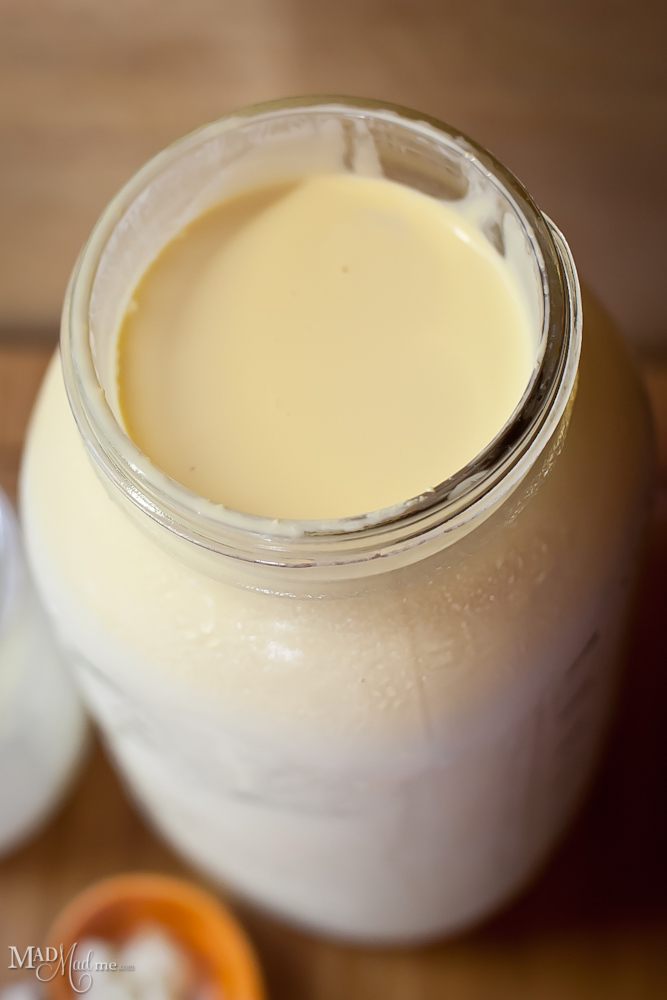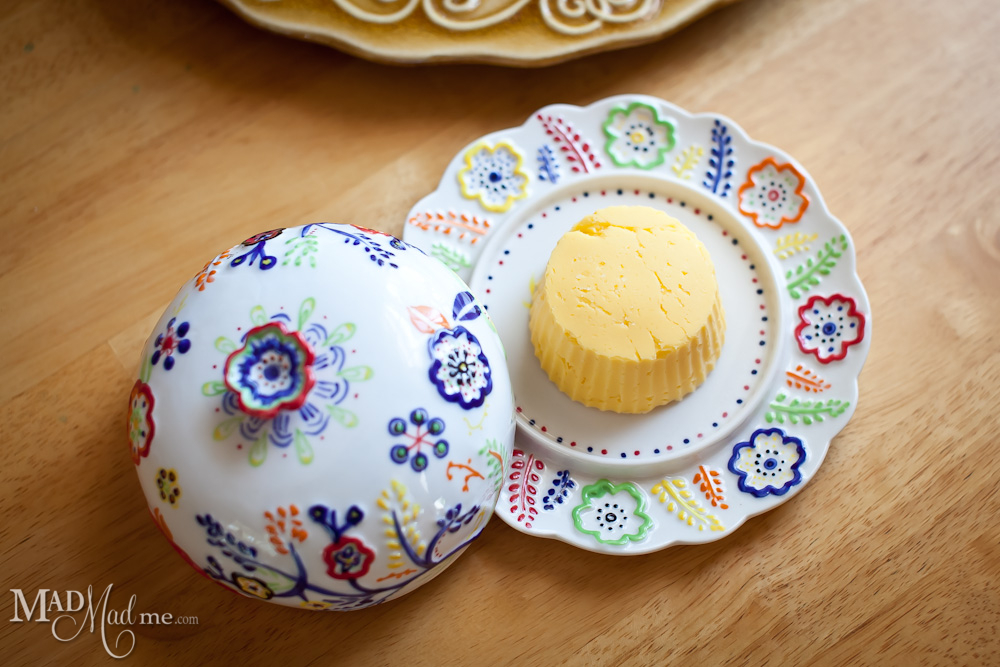Now, I’ve got the chance to tap into part of my known heritage (the German farm settlers of the North) as I explore the world of raw milk. I’m making Kefir, baking with whey and real buttermilk, and churning my own cultured butter. I’m documenting all the wonderful things I’m able to do with this raw milk and now it’s time to dip our fingers deep into the butter bell, this is the entire process I use to make grass fed, cultured, sweet cream butter:
Amish Cultured Butter
- Pull the sweet yellow cream from the top and put it in a jar with a little bit of room in the top. Let this sit out at room temperature for at least 8 hours. This is the culturing process. (If you do not have access to raw milk, you may buy cultures to add to pasteurized milk, or you may skip this culturing step. Your end product will be delicious!). Culturing the cream adds a rich, sweet flavor that does not exist if you skip this step, but it is not necessary to culture your cream, it is just my preference.
- Lid the jar, and shake, moderately, not vigorously, for a few minutes. At first the liquid will thicken, then separate.
- The yellow lumps are the fat, the butter. And the liquid is True Buttermilk.
- Pour the buttermilk off, and save it for baking…
- Now to “clean” the butter: Add clean water back into the butter jar and shake a few times, pour off this water and repeat the process a couple more times, until the water is no longer cloudy.
- Drain all the water, and put the butter in a bowl. Use a spoon to mix the butter. This creates a creamy texture and gives you the chance to mix in a bit of salt if you would like. It takes very little salt to season this delicate cream. I keep a clean towel handy during this part of the process (not fuzzy! a tea towel is perfect or a paper towel). As I’m mixing, I come across little droplets of water trapped in the butter, I use the towel to absorb these droplets by wrapping it around my finger, touching the droplet, and just letting the water wick up into the fabric of the towel.
- The butter is done! You can store it in any air tight container, freeze it, or mould it. I used a silicon baking cup to mould mine to fit nicely into my round butter dish. I pressed the butter into the mould and allowed it to set up in the freezer for just a couple of minutes before I popped it out for the dish.


Here you can see the jar of sweet cream before churning and another jar after churning…

Look at that yellow butter!
 This is how much buttermilk I was able to get from his jar after churning.
This is how much buttermilk I was able to get from his jar after churning.

And this is the butter getting a “cleaning” with clean water. I had to do mine 3 times to get the water clear.

Once the butter was clean and drained, I put it in this bowl to mix in the salt and mash into a creamier texture.

Here is the creamy result, the smell and taste are amazing. I wish I could share this with you right now.


And finally, the moulded butter resting in the dish. So fun, and so delicious.

Enjoy!
Hi I love home made fresh butter. I can get raw milk here in Costa Rica, and they make a raw sour cream that is very liquid and has a sour taste. Dose the milk need to be fresh with in hours from milking?
thanks
Fran
Good question Fran!! Usually, the more liquid the sour cream, the more whey it contains and the whey itself is very sour. You know how when you first open a container of sour cream or yogurt and it looks like there is some ‘water’ settle on the top? That is the whey! And though it is very good for you nutritionally speaking, it can cause a more sour taste in your dairy products. To make more thick and (less sour) sour cream, you would start with a thicker cream (milk that has been undisturbed will separate with a thicker layer of cream on top). And if you want it to be REALLY thick, you could make the sour cream, then let it sit a day in the fridge and pour off any whey that separates still further.
I hope this helps Fran, let me know if you have time.
Inviting you the Carnival of Home Preserving on my blog today and every Friday. Hope to see you there. Laura Williams’ Musings http://laurawilliamsmusings.blogspot.com/2012/06/carnival-of-home-preserving-13-come.html
Wow, so wonderful. I adore your pictures – so big and bright. You’re a talented lady.
God bless you,
I still have the other pictures you sent me which I want to post I haven’t forgotten.
jasmine
Thank you so much Jasmine, your encouragement means a lot to me. God bless Sweetie.
That first dish makes me nostalgic. SO wish I could find some affordable raw milk out here! You know the price of it at Henry’s.
I love the butter dish, where did you get it?
Anthropology! I love that store. I fantasize about being rich and traveling every time I walk through the doors.
I sure do wish I had a source for fresh milk. :}